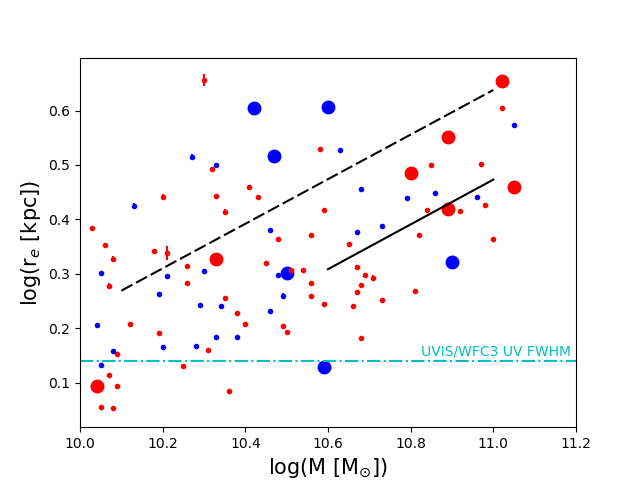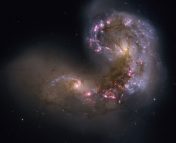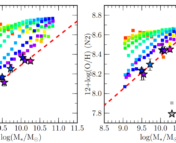
The undergrad research series is where we feature the research that you’re doing. If you’ve missed the previous installments, you can find them under the “Undergraduate Research” category here.
Are you doing an REU this summer? Were you working on an astro research project during this past school year? If you, too, have been working on a project that you want to share, we want to hear from you! Think you’re up to the challenge of describing your research carefully and clearly to a broad audience, in only one paragraph? Then send us a summary of it!
You can share what you’re doing by clicking here and using the form provided to submit a brief (fewer than 200 words) write-up of your work. The target audience is one familiar with astrophysics but not necessarily your specific subfield, so write clearly and try to avoid jargon. Feel free to also include either a visual regarding your research or else a photo of yourself.
We look forward to hearing from you!
************
Tyler Hagen
Minnesota State University
This guest post was written by Tyler Hagen. Tyler is an undergraduate senior (Class of 2021) at Minnesota State University, Mankato, studying Physics with minors in Astronomy and Mathematics. This work was conducted as an undergraduate research course under the guidance of Dr. Michael Rutkowski. It was presented at the 236th AAS Meeting as an interactive poster and awarded the Chambliss Astronomy Achievement Student Award (Undergraduate).
In the low-redshift universe, galaxies typically belong to one of two major classes: early-type (ETGs; massive with spheroidal morphologies and few young stars, i.e. “red and dead”) and late-type (typically less massive, but star-forming with disk and spiral morphologies). However, in the early history of the universe, galaxies looked very different, often with irregular morphologies, host to tremendous reservoirs of gas, and with high rates of star formation. These high-redshift galaxies must evolve into the local population, but the driving mechanisms behind this evolution are not fully understood. High-redshift compact quiescent galaxies (progenitors of ETGs) are intrinsically smaller in size than their analogs in the local universe. It remains uncertain the extent to which this observed size-mass evolution is associated with these galaxies’ merger histories. If these mergers are “wet” (i.e. cold gas-rich), this could induce a burst of star formation in these otherwise quiescent galaxies, due to the accretion of this newly available cold gas.
In our research, we tested for a possible link between recent star formation and this size-mass evolution using new rest-frame far UV imaging from the Hubble Space Telescope (HST) of the GOODS-North field, a region of sky located in the northern constellation of Ursa Major. This is the first of four fields to be observed as part of the UVCANDELS survey (PI: H. Teplitz, IPAC), which will be the largest UV survey of star formation conducted to date by HST. This survey can be used to identify and characterize any young stars that may exist in an otherwise passive galaxy. In combination with the wealth of ancillary data available from ground and space-based observatories, UVCANDELS will provide essential UV imaging of the intermediate redshift () progenitors to present-day massive ETGs.
We identified massive (i.e. with mass greater than
solar masses) galaxies at intermediate redshift (
) with broadband colors (U-V vs. V-J) consistent with “quiescent” galaxies. Of this sample, approximately 100 galaxies have already been observed in the rest-frame far UV (HST WFC3/UV F275W) in the UVCANDELS survey. 30% of those imaged are significantly detected (i.e. signal-to-noise > 3), indicating these sources have recently experienced a minor burst of star formation. This minor star formation could be due to the accretion of cold gas, recently acquired via mergers. We measured the optical sizes of these galaxies with the spatial light profile fitting software GALFIT and used independent measurements of their stellar masses to measure the size-mass distribution of the sample (see Figure 1). From this, we conclude that if these galaxies are analogs to present-day compact quiescent galaxies, they must grow, on average, approximately
in size. We also find that the 30% with significant (
) F275W flux have SEDs (spectral energy distribution, i.e. flux distribution across all wavelengths) consistent with a recent, minor episode of star formation in an otherwise old stellar population. Finally, the sources with significant F275W emission appear to be preferentially associated with relatively richer environments.

All three of these conclusions tentatively support a merger-driven size-mass evolution into present-day ETGs, in which massive quiescent galaxies may restart star formation post-merger. With more incoming data, this may bring insight into the development and growth of ETGs. Forthcoming observations, which will complete the UVCANDELS survey in the summer of 2020, will allow us to better constrain this apparent link between the frequency of (minor) mergers and the size-mass evolution of these galaxies.
If you are an undergraduate that took part in an REU this summer and would like to share your research on Astrobites, please contact us at [email protected]!




